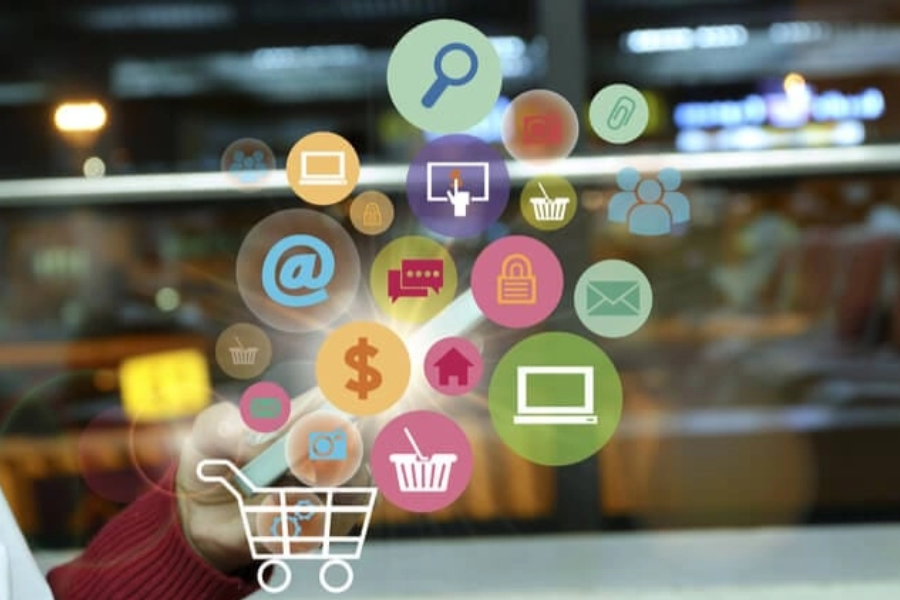Developpez votre application m-commerce: The Latest Tech Upgrades
What is M-Commerce?
M-commerce, short for mobile commerce, refers to the buying and selling of goods and services using mobile devices such as smartphones and tablets. It encompasses various aspects of commerce conducted on the go,developpez votre application m-commerce including mobile banking, in-app purchases, and mobile ticketing. With the rapid rise in mobile device usage worldwide, m-commerce has become a critical component of the e-commerce landscape, offering businesses and consumers new ways to engage in transactions and manage finances.
Types of M-Commerce
M-commerce https://geminitimes.com/ has evolved significantly, incorporating numerous features and functionalities. Here are some key types of m-commerce applications:
- Loyalty Programs and Mobile Coupons
- Mobile coupons and loyalty programs offer customers special deals, discounts, or rewards through their mobile devices. These programs aim to boost repeat purchases and enhance brand loyalty by providing targeted offers via apps or SMS.
- Mobile Banking
- Mobile banking allows users to manage their financial transactions, including account management, money transfers, and bill payments, through mobile apps or secure websites. This provides greater control and convenience for managing finances on the go.
- Mobile Payments
- Mobile payments involve wireless transactions and peer-to-peer applications that facilitate secure and convenient money transfers between devices. This eliminates the need for physical cash and enhances accessibility to financial services.
- Mobile Shopping
- Mobile shopping enables consumers to browse and purchase products through mobile-optimized websites or apps. This technology offers a personalized shopping experience, allowing users to shop from anywhere, at any time.
- Mobile Ticketing
- developpez votre application m-commerce Mobile ticketing allows users to buy, store, and validate tickets for events, transportation, and entertainment through their mobile devices. This reduces the need for physical tickets and enhances convenience for users.
How M-Commerce Works
- Enhanced User Experience
- A successful m-commerce platform should have a user-friendly interface, optimized performance, and data-driven A/B testing to improve usability. Personalized shopping experiences, driven by analytics, help build customer loyalty and satisfaction.
- Ongoing Innovation and Adaptation
- M-commerce is constantly evolving, embracing new technologies and trends such as voice commerce and sustainability to meet customer needs and drive digital transformation in retail and e-commerce.
- Seamless Transactions
- M-commerce platforms ensure smooth and secure transactions through various apps or mobile websites. Integration with secure payment options makes the purchasing process efficient and hassle-free.
- Data Protection and Security
- Protecting user data is crucial for maintaining trust. M-commerce platforms use SSL certificates and tokenization to safeguard against security breaches and comply with regulations such as GDPR and PCI DSS.
- Technology Integration
- M-commerce leverages technologies like geolocation, augmented reality (AR), QR codes, and Near Field Communication (NFC) to enhance the shopping experience. These features provide personalized recommendations, contactless payments, and immersive product interactions.
Advantages of M-Commerce
- Customization and Convenience
- M-commerce offers the convenience of shopping from any location and at any time. Businesses can use data analytics to deliver personalized offers and product recommendations, improving customer satisfaction and boosting sales.
- Improved Engagement and Inclusion
- Mobile commerce enhances customer engagement through real-time communication, immersive technologies, and innovative features. This strengthens brand loyalty and encourages repeat purchases.
- Optimized Payments for Efficiency
- Mobile commerce simplifies payments with secure options like mobile wallets and contactless payments, reducing cart abandonment and increasing sales. It also enables businesses to reach a global audience, expanding their market potential.
- Insights from Data for Sustainability
- M-commerce provides valuable insights into customer behavior and preferences, helping businesses refine their marketing strategies and products. Digital transactions also reduce environmental impact through the use of electronic receipts and digital goods.
- Scalability and Access
- M-commerce allows businesses of all sizes to compete globally, offering scalability and access to new markets. It simplifies the purchasing process, making it easier for startups and small businesses to thrive.
- Enhanced Shopping Experience
- developpez votre application m-commerce The primary goal of m-commerce is to deliver a seamless and enjoyable shopping experience. Optimized mobile interfaces and smooth navigation contribute to increased customer satisfaction and retention.
- Push Notifications
- Push notifications are a powerful tool for engaging users with updates and offers. They help drive traffic and sales by reminding users of promotions and encouraging return visits.
Drawbacks of M-Commerce
- Security Issues
- Despite advancements in security measures, mobile commerce platforms remain vulnerable to threats. Businesses must invest in secure payment gateways and data protection to ensure customer trust.
- Small Screen Size
- The limited screen size of mobile devices can restrict readability and navigation. It is essential to design responsive and user-friendly interfaces to ensure a positive shopping experience.
- Connectivity Concerns
- Reliable internet connectivity is crucial for mobile commerce. Users may face issues with poor network signals or connectivity interruptions. Optimizing platforms for offline access can mitigate these challenges.
- Device Compatibility
- M-commerce applications must be compatible with various devices and operating systems. Using cross-platform testing frameworks and responsive design principles can help ensure a consistent user experience across different devices.
Final Thoughts
developpez votre application m-commerce Developing a successful m-commerce application requires careful planning and a focus on user experience. By prioritizing security, intuitive design, and staying updated with market trends, businesses can create effective m-commerce solutions that cater to modern consumer needs and drive growth in the competitive digital landscape.
Facts
- Definition: M-commerce, or mobile commerce, refers to transactions conducted via mobile devices such as smartphones and tablets, encompassing mobile banking, in-app purchases, mobile ticketing, and mobile payments.
- Growth: The m-commerce market has seen significant growth, driven by the increasing use of mobile devices and advancements in mobile technology.
- Types: Key types of m-commerce developpez votre application m-commerce include mobile banking, mobile payments, mobile shopping, mobile ticketing, and loyalty programs.
- Security: M-commerce platforms implement various security measures, including SSL certificates and tokenization, to protect user data and ensure secure transactions.
- Technology Integration: Modern m-commerce uses technologies like geolocation, AR, QR codes, and NFC to enhance user experience and facilitate seamless transactions.
- User Experience: Successful m-commerce applications focus on a user-friendly interface, smooth navigation, and personalized experiences to increase customer satisfaction and engagement.
Summary
M-commerce, or mobile commerce, involves buying and selling activities carried out through mobile devices. It includes features such as mobile banking, payments, shopping, and ticketing. M-commerce has rapidly evolved with advancements in technology, providing users with greater convenience and businesses with new opportunities to engage customers.
The benefits of m-commerce include increased customization and convenience, improved customer engagement, optimized payment options, valuable data insights, and scalability. However, it also faces challenges such as security concerns, small screen size limitations, connectivity issues, and device compatibility.
To succeed in the m-commerce landscape, businesses must prioritize security, design intuitive interfaces, and adapt to the latest technological trends.
FAQs
1. What is m-commerce?
M-commerce, or mobile commerce, refers to the buying and selling of goods and services using mobile devices like smartphones and tablets. It includes mobile banking, mobile payments, mobile shopping, and mobile ticketing.
2. What are the main types of m-commerce?
The main types of m-commerce include:
- Mobile Banking: Managing financial transactions through mobile apps or secure websites.
- Mobile Payments: Wireless transactions and peer-to-peer money transfers.
- Mobile Shopping: Buying products through mobile-optimized websites or apps.
- Mobile Ticketing: Purchasing and managing tickets for events, transportation, and entertainment.
- Loyalty Programs and Mobile Coupons: Offering discounts and rewards through mobile platforms.
3. What are the benefits of m-commerce?
Benefits of m-commerce include:
- Customization and Convenience: Personalized offers and the ability to shop anytime, anywhere.
- Improved Engagement: Enhanced customer relationships through real-time communication and innovative technologies.
- Optimized Payments: Simplified payment processes and reduced cart abandonment.
- Data Insights: Valuable customer behavior insights for better marketing strategies.
- Scalability: Opportunities for businesses of all sizes to compete globally.
4. What are some common challenges in m-commerce?
Common challenges include:
- Security Issues: Ensuring protection against data breaches and fraud.
- Small Screen Size: Designing for limited screen space on mobile devices.
- Connectivity Concerns: Addressing issues with network connectivity and offline access.
- Device Compatibility: Ensuring compatibility across various devices and operating systems.
Explore the latest trends in celebrity fashion and red carpet looks on GeminiTimes.com.






